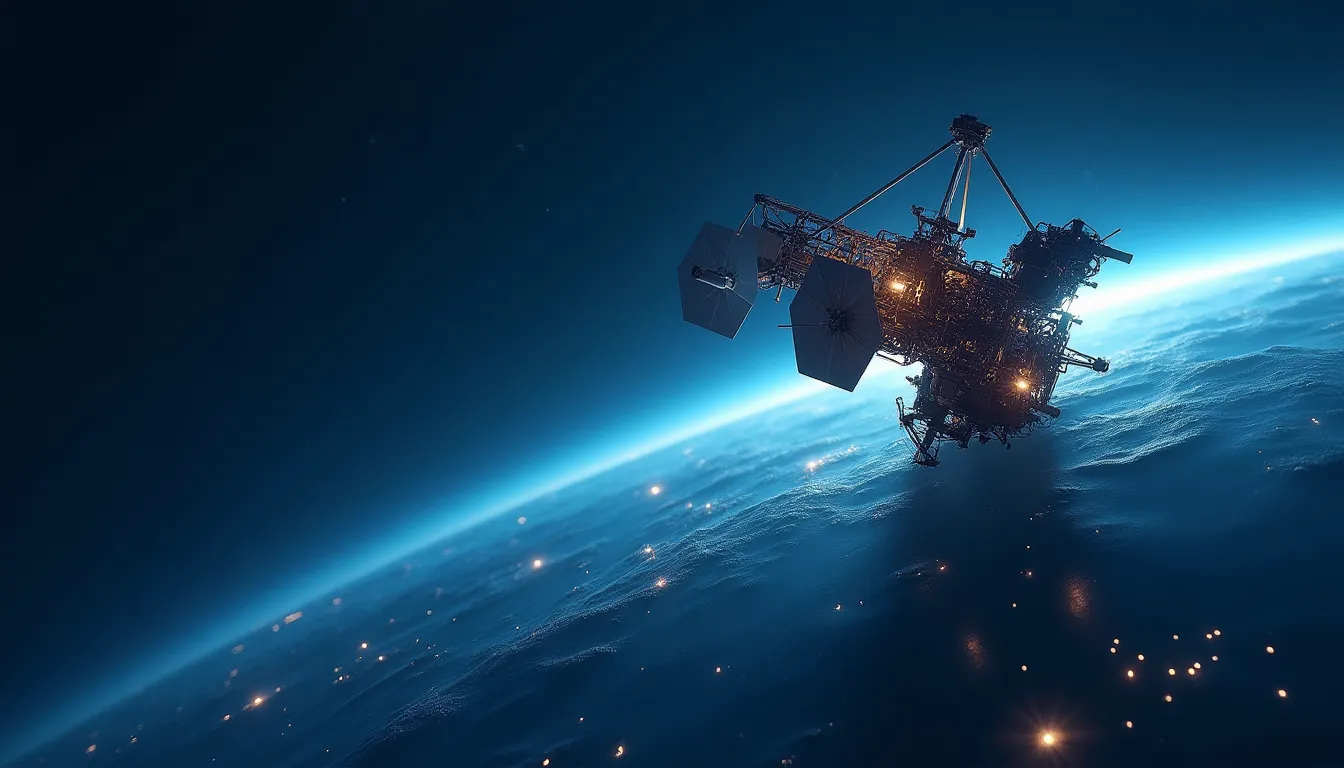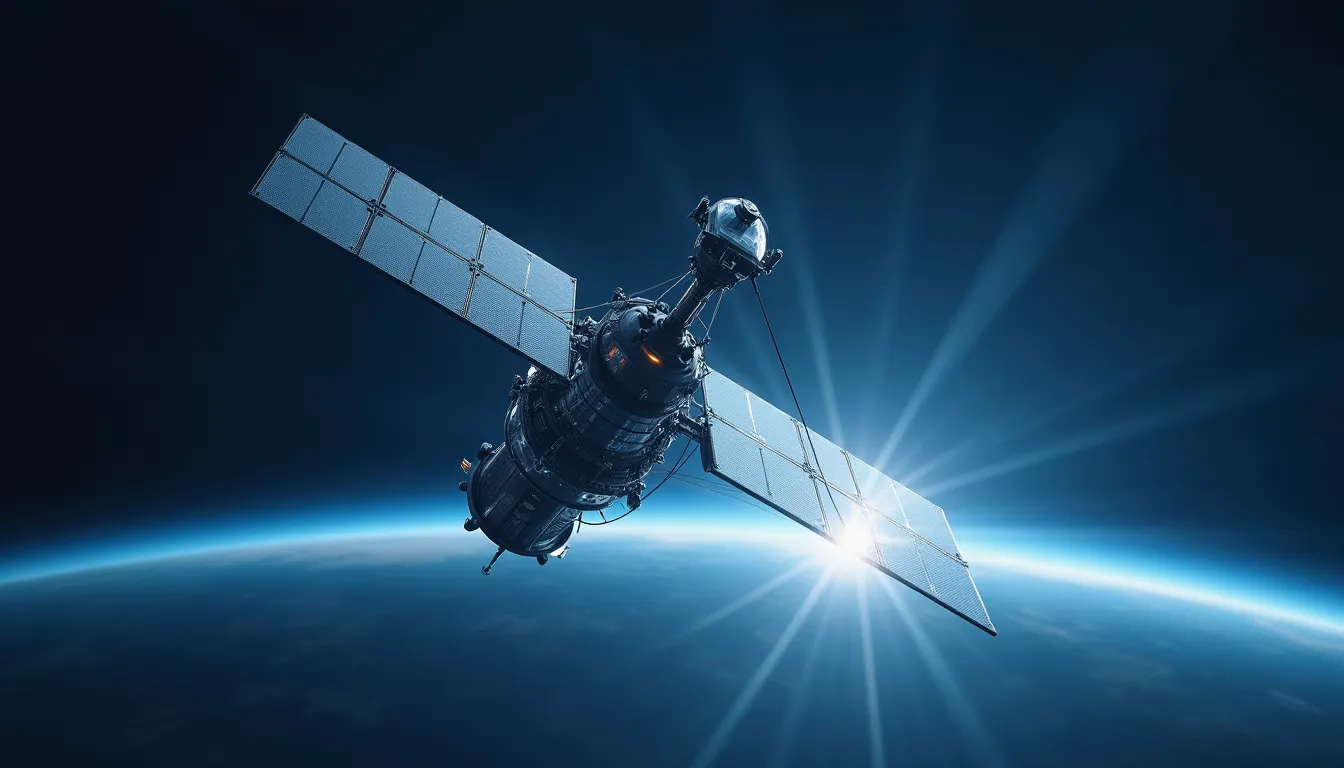Recent advancements in satellite technology are significantly reshaping the aerospace and defense sectors, particularly in the realms of internet connectivity and agricultural monitoring. Key developments from major industry players are setting the stage for an interconnected future, where satellite constellations and direct-to-device (D2D) communications are at the forefront.
Satellite Internet Constellations: Amazon’s Kuiper Project
On September 25, 2025, United Launch Alliance (ULA) successfully launched 27 new satellites for Amazon’s ambitious Kuiper Project. Utilizing the powerful Atlas 5 rocket configured with five solid rocket boosters, this launch represents the third batch of satellites aimed at expanding Amazon’s satellite internet service. This initiative positions Amazon to compete directly with existing players like SpaceX’s Starlink and Eutelsat’s OneWeb.
The Atlas 5 551 rocket, known for its heavy payload capacity, underscores the technical prowess required for such large-scale deployments. Each satellite is designed to facilitate broadband internet access to underserved and remote areas, marking a significant leap in the quest for global connectivity. As the demand for high-speed internet continues to rise, satellite constellations like Kuiper are pivotal in ensuring equitable access worldwide.
Direct-to-Device (D2D) Satellite Technology
In a groundbreaking demonstration, Lynk Global has made strides in D2D satellite technology, which enables direct communication between standard mobile devices and satellites. This initiative was showcased in Türkiye in collaboration with Turkcell, the nation’s largest mobile operator, serving over 40 million subscribers. The D2D technology is designed to enhance network resiliency and coverage in areas where traditional mobile infrastructure is lacking.
Moreover, earlier in 2025, Claro in Brazil successfully tested direct satellite-to-smartphone connections, supported by Anatel, the Brazilian telecom regulator. This technology aims to bridge connectivity gaps in rural and remote regions. Lynk Global’s efforts do not stop there; they also demonstrated their D2D capabilities in Portugal with MEO, further illustrating the international adoption of this innovative technology.
The Role of Satellites in Agriculture
The European Commission has recognized the transformative power of satellite technology in agriculture, particularly through the implementation of Area Monitoring Systems (AMS) under the Common Agricultural Policy (CAP). The 2025 edition of the Innovation in Crop and Environment (ICE) conference highlighted the growing reliance on satellite data and smart technologies in modern farming practices.
Satellites offer a wealth of data that enables farmers to monitor crop health, manage resources efficiently, and make informed decisions. By utilizing advanced analytics and satellite imagery, agriculture can become more sustainable and productive. This convergence of technology not only aids farmers but also contributes to food security across Europe.
Industry Insights and Future Prospects
These developments in satellite technology reflect a broader trend of integrating advanced systems to enhance global connectivity and operational efficiency. As the aerospace and defense sectors continue to innovate, the demand for precision navigation systems and advanced sensor modules is expected to grow. For instance, high-performance MEMS accelerometers and quartz MEMS gyroscopes are becoming integral to various applications, from precise surveying with the YWJ01ZB150 system to robust navigation systems designed for demanding environments.
As satellite constellations grow more sophisticated, the potential for applications in other sectors is immense, paving the way for innovations in telecommunications, disaster management, and environmental monitoring. Companies are investing heavily in refining satellite technologies, ensuring that systems like the high-precision fiber optic sensing coils contribute significantly to navigation and measurement applications.
Conclusion
The advancements in satellite technology are reshaping the landscape of connectivity and agriculture. With initiatives like Amazon’s Kuiper Project and Lynk Global’s D2D technology pushing the boundaries of what is possible, the aerospace and defense sectors are entering a new era of innovation. As these technologies continue to develop, they promise not only to enhance global communications but also to revolutionize the agricultural sector, ensuring a more connected and sustainable future for all.
References
-
Watch live: ULA Atlas 5 launches 27 Kuiper satellites for Amazon on … (www.youtube.com) - 9/25/2025 … satellites for Amazon’s Kuiper internet service on Thursday, Sept. 25 … News September 2025. Dr. Becky New 13K views · 11:38 · Go to channel …
-
Artemis II Science and Technology News Conference (Sept. 23, 2025) (www.youtube.com) - 9/24/2025 … space travel. Artemis II is scheduled for no later than April 2026. In this news conference, leaders in the Artemis program and Science …
-
Artemis II Mission Overview News Conference (Sept. 23, 2025) (www.youtube.com) - 9/23/2025 … space travel. Artemis II is scheduled for no later than April 2026 … Artemis II Science and Technology News Conference (Sept. 23, 2025).
-
Satellite Tech and Smart Data Take Root in Europe’s Farming Future (agriculture.ec.europa.eu) - 9/19/2025 The 2025 edition of ICE highlighted the transformative role of satellite-based Area Monitoring Systems (AMS) in CAP delivery. With AMS now fully …
-
News - Lynk.world (lynk.world) - 2/9/2023 September 14, 2025. Lynk Global CEO Ramu Potarazu on life after SPAC. Lynk Global. Only a bold satellite operator takes on SpaceX, especially in the nascent …



